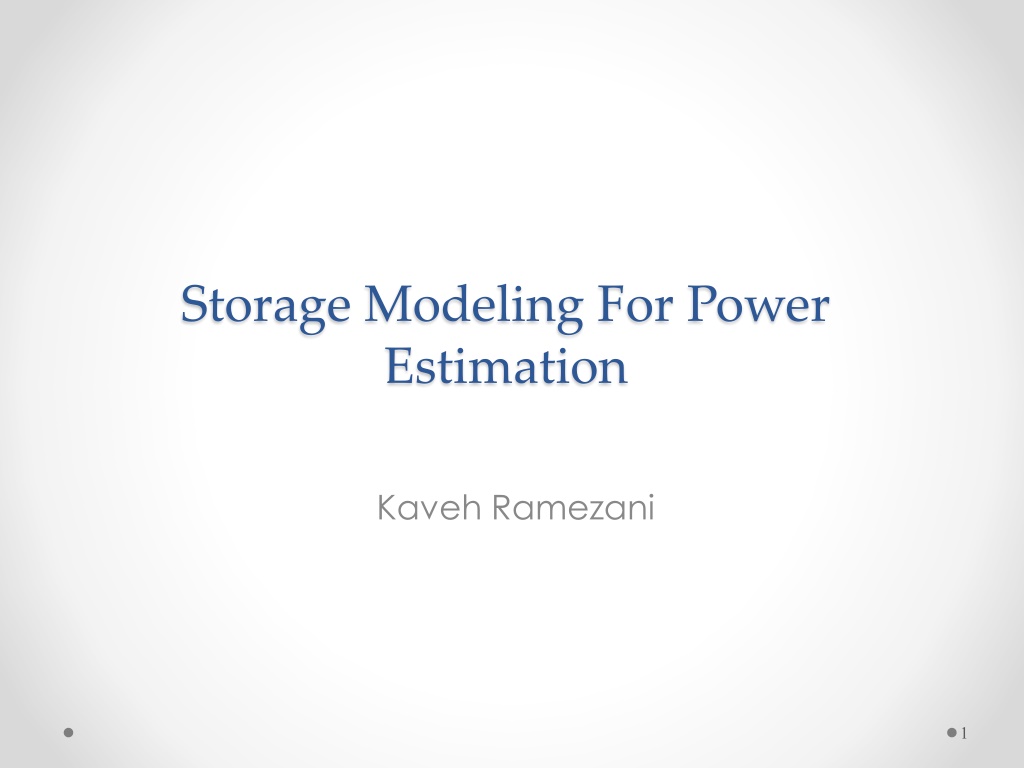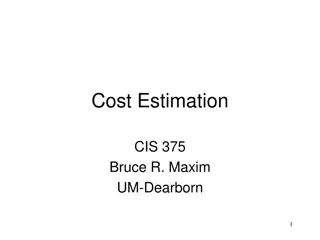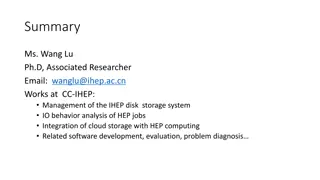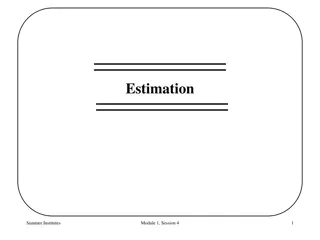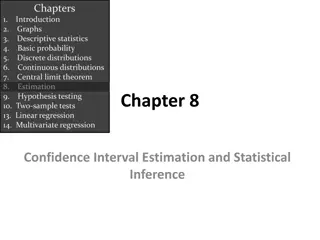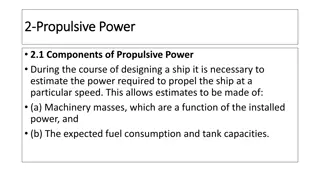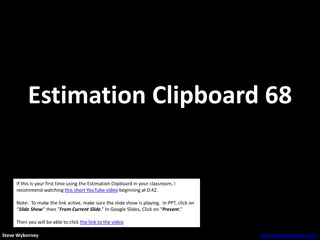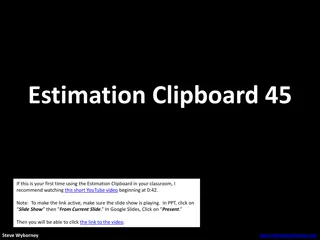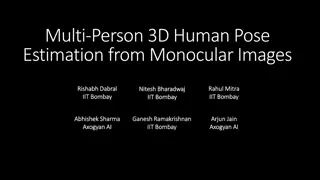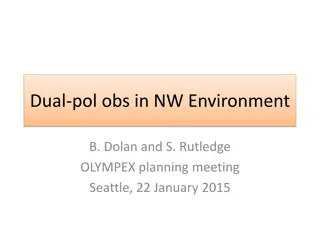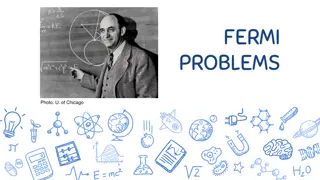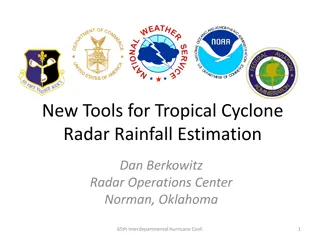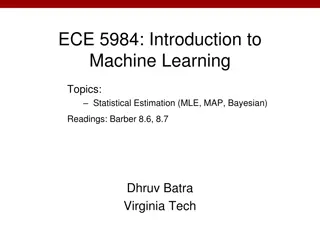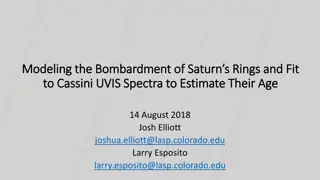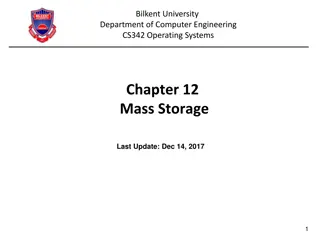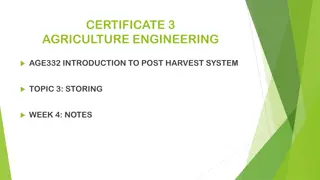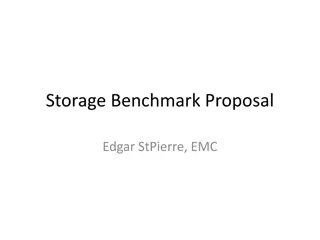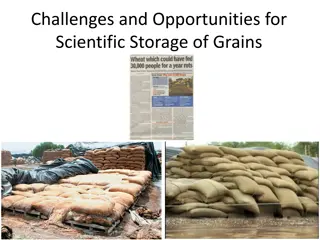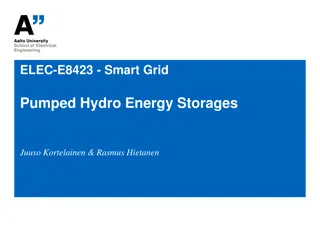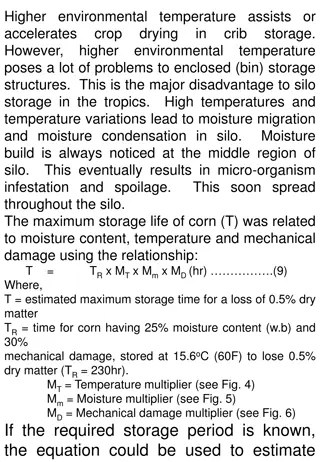Understanding Storage Modeling for Power Estimation
The importance of storage power estimation, focusing on disk power consumption and the STAMP model for workload-aware power estimation in enterprise storage systems. Details on the breakdown of power consumption, differences between frontend and backend I/O workloads, and the impact of workload patterns on disk operations are discussed.
Download Presentation

Please find below an Image/Link to download the presentation.
The content on the website is provided AS IS for your information and personal use only. It may not be sold, licensed, or shared on other websites without obtaining consent from the author. Download presentation by click this link. If you encounter any issues during the download, it is possible that the publisher has removed the file from their server.
E N D
Presentation Transcript
Storage Modeling For Power Estimation Kaveh Ramezani 1
Introduction Storage Power Importance o Storage power consumption increases daily Cooling problem. Power supply. Scientific researches. Disk Power Importance o vast majority of storage power consumed is directly or in- directly related to disk drives o Disk drives remain the primary storage mechanism for the next decades 2
Introduction Disk power consumption: o Fixed portion (idle mode) About 2/3 of disk power budget. Spindle motor. o Dynamic portion (affected by IO workload) Seek operation: moving head. Data transfer operation. 3
STorAge Modeling for Power What is Stamp? o Workload-aware storage power estimation model o Originally for enterprise storages o Can provide power estimation for.. Controller Single disk Array of disks o consider both the idle and active states. 4
STorAge Modeling for Power Provides power breakdown as a function of.. o Seek operation o Data transfer operation o Queue optimization (for access patterns) Translates host level workload to.. o Disk-level o RAID-level 5
STAMP 6
STorAge Modeling for Power Differents between frontend and backend IO workload: o The frontend workload refers to how the controller perceives the I/O operations arriving from the host. o The backend workload refers to the I/O operations performed by the hard disks. Read caching results in cache hits and reduced disk workload backend is composed of cache misses that incur disk seek and data transfer activity 7
STorAge Modeling for Power Result of frontend workload type on backend workload: Random pattern: cause to many cache misses o Sequential pattern: cause less cache miss( performing prefetching) o Reduces amount of seek and transfer ops Write pattern: numerous write operations can be combined to a single o backend write causes to less seek and transfer operations. Even random write workload may results in coalescing write operation In a RAID, write operations are translated to RAID transactions according to RAID scheme. (e.g: RAID5: 1 write in frontend 2 read and 2 write in backend 8
STAMP Methodology To estimate power of a given frontend workload o STAMP translate a frontend workload to a backend workload consists of three components 1. Workload translation. 2. Power tables. 3. Interpolation. Quality of STAMP depends on two factors i. the accuracy of the workload translation process ii. the quality of the power table units 9
STAMP Methodology 1. Workload translation: o Translate frontend workload to backend primary workload.(probabilistic transformation) o Frontend workload describes as set of parameters: Workload behavior parameters: o Sequential read/write o Random read/write Configuration parameters: o Type of RAID, Number and type of disks, Etc. ???= (????,?????????????,??????????????, ?????????????, ???????????????) OPTypeParams=(IOs/sec, transfer_size, HitRatio) 10
STAMP Methodology Workload translation: o Backend Primitive activity: Set of activities corresponding to o the disk head seek operation o the magnetic head data transfer operation These activities correspond to one of following: o Frontend read/miss operations. o Prefetch follows frontend sequential read. o Frontend write operations that are stored in controller buffer. ?????= (???? ???(????); ???? ???(?????????????)) 11
STAMP Methodology Workload translation: o Backend Primitive activity: Disk Act(Seek)/secs = FRandReadIo FRandReadCacheMissRatio [1 + RaidOverhead] + FRandWriteIo [1 + RaidOverhead] RaidWriteOverhead transformation of Fio to Bacts is a probabilistic transformation 12
STAMP Methodology 2. Power table o STAMP constructs a power table for each primitive activity. 3. Interpolation. o Given the data in the power tables, STAMP estimate the power consumption of the backend activity and calculate sum of them 13
Validation and Results o Benchmark: various micro-benchmarks and an industry standard SPC-1 workload o Use IOMETER to convert input workloads to required parameters. o Implement an online energy meter. 14
Validation and Results Stand Alone Disk Validation Results o 300GB 15K RPM enterprise disk drive Seek power/IO 15
Validation and Results Stand Alone Disk Validation Results Seek power/IO 16
Validation and Results Disk modeling accuracy for two enterprise disks running various workloads: 17
Validation and Results RAID Validation Results o Benchmark: synthetic workloads, SPC-1 workload for additional validation. o Online energy meter: Combined DC input disk level and AC input power of a RAID5 disk enclosure o 146GB 10K enterprise disks 18
Validation and Results STAMP model estimation error( random read) 19
Validation and Results STAMP model estimation error (write) 20
Validation and Results STAMP model estimation error(Random write-large transfer size) 21
Validation and Results Measured&estimated power over time of a enterprise storage (SPC-1) 22
Problems Probabilistic model Inappropriate for Power Management methods Do not care unsequential prefetching and caching methods 23
Reference Miriam Allalouf , Yuriy Arbitman , Michael Factor , Ronen I. Kat , Kalman Meth , Dalit Naor, Storage modeling for power estimation , Proceedings of SYSTOR 2009: The Israeli Experimental Systems Conference, May 04-April 06, 2009, Haifa, Israel 25
